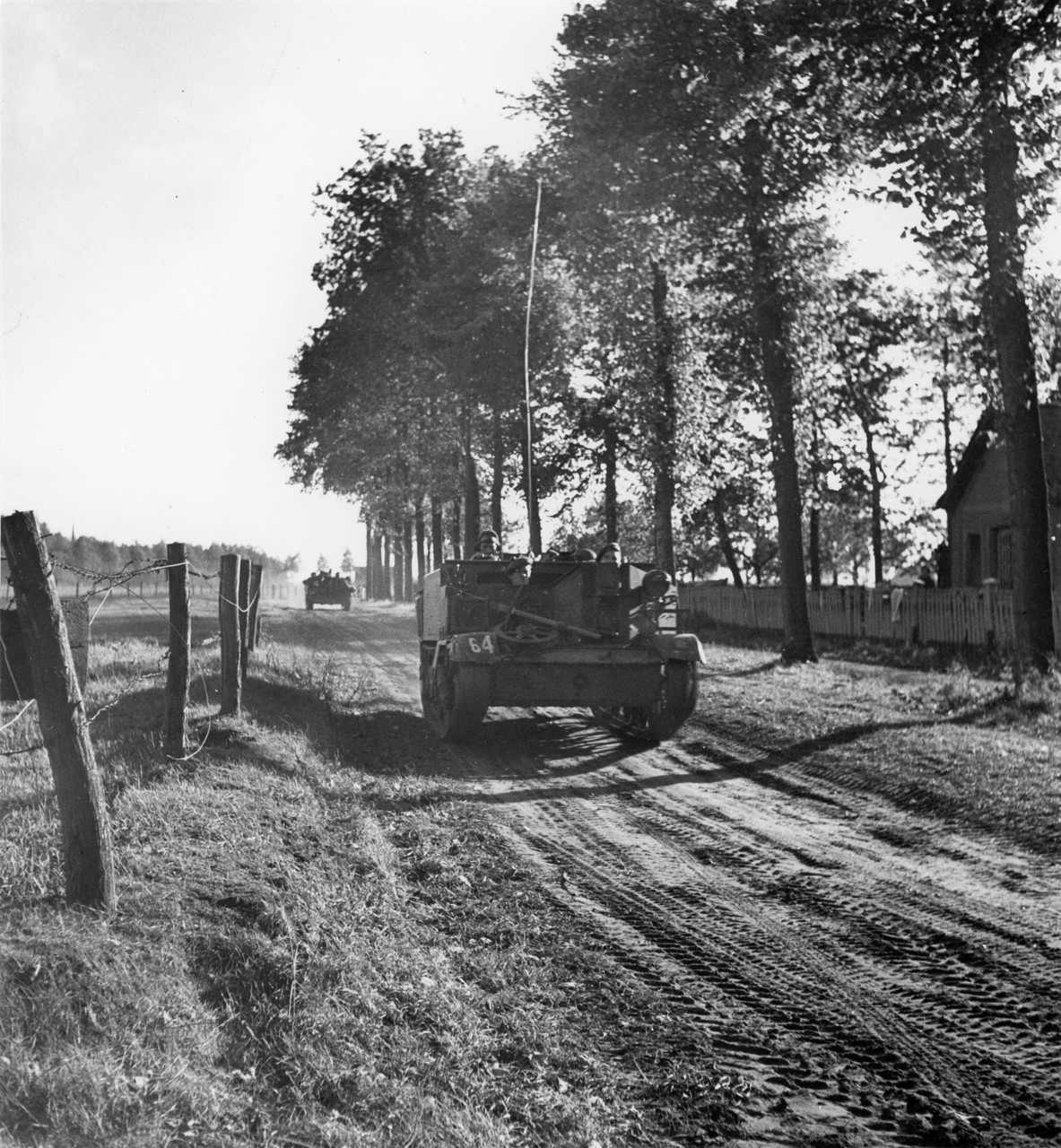The plan to break through the German defences at the Kreekrakdam in armoured vehicles on the afternoon of 24 October 1944 had failed. Wrecked tanks blocked the road, forcing the Canadian soldiers of the Essex Scottish Regiment to proceed on foot. Out of sight of the enemy, the soldiers climbed out of the trucks, and the officers gathered their men. After the company commander gave the order, the soldiers marched in goose step towards the far side of the dam.
When the Canadians came into view of the enemy, fire was opened on them. Bullets whizzed past the soldiers. The Canadians quickly dropped to the ground. Three officers were too late and were struck by bullets. Out of reach of the ambulance, the wounded men writhed in the tall grass. Two medics, carrying a stretcher, braved the German bullets and ran towards the casualties. Risking their own lives, the brave soldiers made three trips back and forth to bring the wounded to safety. Due to the poor condition of the roads, the medics were then forced to carry the patients on foot to the doctor at battalion headquarters. As a result, help came too late for two of the wounded: the bullets that struck Stewart Jones and Harold Lindal proved fatal.
Since the vanguard of the battalion was left without its leaders on the Kreekrakdam, the commander decided to withdraw his troops for the time being. With the aim of making a renewed attempt to breach the German defences later, the commander requested artillery support to assist the infantry with heavy firepower. Most of the enemy fire came from a position near a farm at Middenhof, about 2,000 metres away. This enemy position was codenamed ‘Mary’. The Canadian artillery took its mission very seriously, and with all the resources at their disposal, they opened fire on the position.
Before the artillery bombardment began, Typhoons, Allied fighter-bombers, appeared on the horizon. With roaring engines, the aircraft dove on the German position. The trajectories of the missiles were marked by plumes of smoke, followed by massive explosions as the projectiles hit their targets. While the air force continued its devastating work, the artillery joined the fight with great intensity. Heavy shells announced themselves with a rising whistle from Kloosterzande, while more shells arrived from Ossendrecht. Soon, the Canadian infantrymen spotted smoke plumes rising on the horizon.
The next day, the artillery again opened fire on crossroads Mary. This time, simultaneously with the bombardment, soldiers of the Essex Scottish Regiment snuck along the dyke towards the objective. A thick morning fog helped the attackers approach the destroyed German position undetected. Lieutenant Clarence Jeffrey's section was the first to arrive at the enemy position. Barbed wire blocked their path,and a German machine gunner, who had survived the storm of bombs and shells, opened fire. Despite this, Jeffrey managed to lead his men past the barbed wire into the trenches. There, skirmishes broke out with the remaining German soldiers. After several hours, the remaining occupants of the position surrendered. About a hundred German soldiers were taken away with their hands raised above their heads. Lieutenant Clarence Jeffrey was awarded the Dutch Bronze Lion for his actions during these battles.
